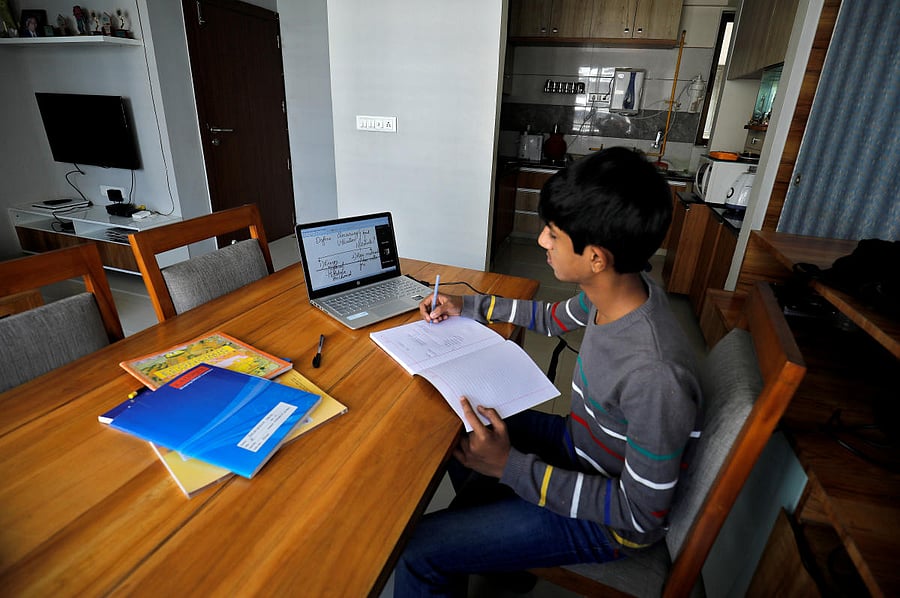
Since the Covid-19 outbreak, there has been a continuous and extensive debate on reopening of schools, online classes etc. However, we have neglected the opinion, suggestions, and requests of the most important stakeholders – students. To gain insights into their opinion, I spoke extensively to dozens of students from Classes 3 to 12.
A sizeable number of students, who seemed obedient and disciplined, opined that they are satisfied with the online classes. They have accepted what is being given to them without questioning or exploring alternatives.
However, some others had insightful and critical comments on the current procedure.
Here are some first-person accounts:
“Initially, I was curious about how this could work and how I could learn. I watched all the lecture videos without skipping or fast-forwarding topics even though I did not understand. After a few weeks, the videos were turning monotonous, long (each session being one and a half hours long), boring and fast (they were covering more topics than that would be covered at the same time at college). To top all these, they started to extend the duration of a video up to two hours. I could not take it any longer and I skipped a few topics that were just sprinting over my head,” said a Class 11 student who was a topper in Class 10.
“I am testing my own limits to tolerate the anger and frustration that is building up inside; I am fighting an impulse to smack my 5.5-inch device against the wall. I am trying really hard to organise my thoughts as they were before,” said a Class 9 student.
“Online classes are ineffective. It is very easy to get distracted. Teachers are not able to put forward their points due to lack of visuals. Children can easily bunk classes. There is very little interaction. At best a teacher can switch on the webcam and demonstrate something properly, but usually they don’t. Teachers can’t figure out who is paying attention and who is not. It is like listening to a podcast but one can’t learn mathematics, physics, chemistry without visualisation/physical presence of teachers,” said a Class 10 student.
“Online classes need to be conducted for higher classes as a stop gap arrangement, as there is no other option during the pandemic. But there are a lot of network disturbance issues. Also, however well the teacher explains a concept, when she checks with students if they have understood, they simply say a ‘yes’ for the sake of it. In a regular classroom, she can feel the vibe and figure out if they are bluffing,” said a Class 12 student.
“I think they can give notes and assignments instead and parents can teach at home. It will be nice to have more time with parents,” said a Class 4 boy student.
Teachers’ role
Radhika has been teaching primary school children for 30 years. Now having no option but to take her classes online, she has risen to the challenge and is bringing a personal touch to keep her little ones enthused and motivated.
She makes audio calls to her students turn by turn before the online sessions, she greets them by name with a big smile, comments on their smile or bright faces during class, and talks about how the lesson connects to real life. At times, she even gets up and enacts the lesson in a deep voice bringing in some dramatic moments to the class – and encourages the lively and naughty ones also to enact.
What Radhika has adapted is being done and can be done by all teachers.
Those who have understood that holding attention online is a much greater challenge, are using very interesting techniques to ensure better learning.
Here are some ways and means teachers can adapt:
Select a few students every day to give a quick recap in the next class.
Give two-minute breaks during class to greet each other, shout, clap etc, with a timer showing how much time is left.
Give quick spontaneous one-minute quiz or exercise in the middle of the class. Use audio-visuals to break the monotony.
Either the teacher or a designated counsellor can observe bored or distracted students and have a one on one session after the class, listening to their frustrations and doubts.
There are many more such activity-based interventions that can reduce the monotony and distractions of students. Of course, the exact methods will need to vary based on the age group of the students, and by trial and error to find out what they respond to.
If teachers and school heads were to talk informally and in confidence with their students, many more significant points will arise which can be considered to make the forced online classes more effective.
(The author is a senior career counsellor based in Bengaluru)